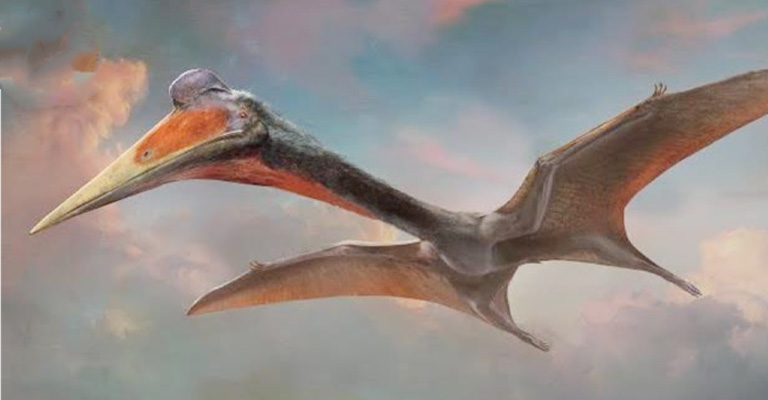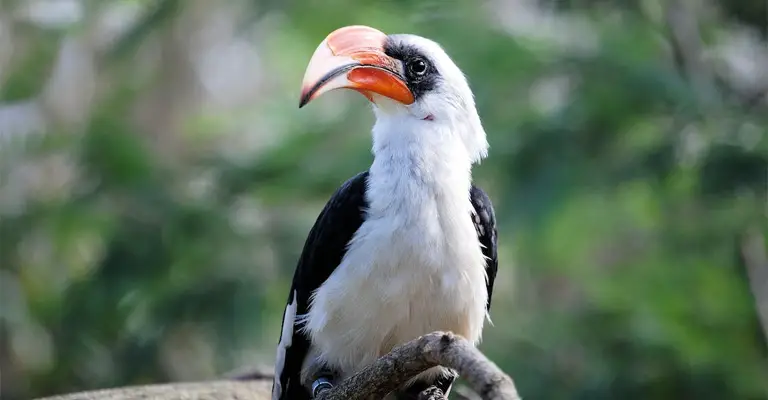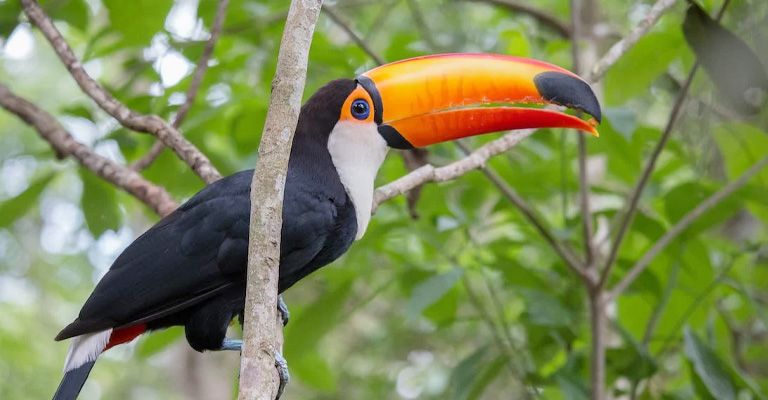The tyrannosaurids, a group of fearsome carnivorous dinosaurs that included the iconic Tyrannosaurus rex, share a fascinating and unexpected connection with modern birds.
Despite the vast temporal gap between them, scientific research has revealed striking similarities and evidence of a close evolutionary relationship. This connection sheds light on the evolutionary path that led to the development of avian characteristics we see in birds today.
In this article, we will explore how were the tyrannosaurids closely related to birds. The close relationship between tyrannosaurids and birds is supported by a range of evidence, including anatomical similarities, fossil discoveries, and genetic studies.
From anatomical features to genetic studies, we will delve into the scientific discoveries that have unraveled this remarkable connection, providing a deeper understanding of the evolutionary history of both tyrannosaurids and birds.

How Were the Tyrannosaurids Closely Related to Birds?
Tyrannosaurids, a group of large carnivorous dinosaurs that includes the famous Tyrannosaurus rex, are indeed closely related to birds.
This relationship is supported by various lines of evidence, including anatomical similarities, fossil discoveries, and genetic studies. Let’s explore these connections in more detail.
Anatomical Similarities
One of the key pieces of evidence linking tyrannosaurids to birds is the presence of several anatomical features that are shared between the two groups. These similarities can be observed in the skeletal structure, particularly in the skull and limbs.
Skull Structure
Tyrannosaurids and birds share several cranial features, such as a large opening in the skull called the antorbital fenestra. This fenestra, found in both groups, is a characteristic trait that distinguishes them from other dinosaur lineages.
Additionally, both tyrannosaurids and birds possess a unique joint in the lower jaw called the intramandibular joint, which allows for increased flexibility and a more efficient bite.
Limbs and Feet
Another striking similarity between tyrannosaurids and birds can be seen in their limb and foot structure. Both groups have three-toed feet with a similar arrangement of bones.
This arrangement, known as the arctometatarsalian condition, is characterized by a specific fusion of bones in the foot. This feature is not found in other dinosaur groups but is present in both tyrannosaurids and birds.
Fossil Discoveries
Fossil evidence has played a crucial role in establishing the evolutionary relationship between tyrannosaurids and birds. Over the years, several important fossil discoveries have shed light on this connection.
Feathered Tyrannosaurids
In recent years, the discovery of feathered tyrannosaurid fossils has provided compelling evidence for the close relationship between these dinosaurs and birds.
Fossils from China, including Yutyrannus huali, Dilong paradoxus, and Guanlong wait, have revealed the presence of filamentous feathers covering their bodies.
These feathers are similar in structure to those found in early birds and suggest that feathers were likely present in the common ancestor of tyrannosaurids and birds.
Intermediate Forms
In addition to feathered tyrannosaurids, the discovery of intermediate forms has further supported the link between these dinosaurs and birds. Fossils like the early tyrannosauroid Dilong paradoxus exhibit a combination of bird-like and dinosaur-like features.
For example, Dilong paradoxus possesses a bird-like wishbone (furcula) and a long, slender body similar to some early birds. These transitional forms provide valuable evidence for the evolutionary transition from dinosaurs to birds.
Genetic Studies
Genetic studies have also contributed to our understanding of the relationship between tyrannosaurids and birds.
By comparing the DNA of modern birds with that of other reptiles, scientists have been able to uncover genetic similarities that support their shared ancestry.
Shared Genetic Sequences
One significant finding is the presence of shared genetic sequences between birds and reptiles, including dinosaurs. Studies have identified specific genes involved in the development of feathers, beaks, and other bird-specific traits that are also present in the genomes of reptiles.
These shared genetic sequences provide strong evidence for a common ancestry between birds and dinosaurs.
Evolutionary Development
Genetic studies have also shed light on the evolutionary development of bird-like traits in dinosaurs.
By examining the genetic pathways involved in the development of feathers and other bird-like features, scientists have gained insights into the genetic changes that occurred during the transition from dinosaurs to birds.
These studies have revealed that the genetic toolkit for bird-like traits was present in dinosaur ancestors, and modifications to these genetic pathways likely led to the evolution of feathers and other avian characteristics.
Why Are Birds the Only Surviving Dinosaurs?

Birds are considered the only surviving dinosaurs because they are the direct descendants of a group of theropod dinosaurs that survived the mass extinction event that occurred approximately 66 million years ago.
This event, known as the Cretaceous-Paleogene (K-Pg) extinction event, wiped out most of the non-avian dinosaurs, but a small group of theropods managed to survive and eventually evolved into the diverse group of birds we see today.
Several factors contributed to the survival and success of birds as the only living dinosaurs.
Adaptability and Flight
One key factor that contributed to the survival of birds is their ability to fly. Flight provided birds with a distinct advantage in terms of mobility, escape from predators, and access to new food sources.
The ability to occupy different habitats and exploit various ecological niches allowed birds to survive and thrive in a changing world.
Small Size and Rapid Reproduction
Compared to their dinosaur ancestors, birds are generally smaller in size. This reduced body size likely played a role in their survival. Smaller animals have higher metabolic rates, which can enable them to adapt more quickly to changing environments.
Additionally, smaller body size often correlates with shorter generation times and higher reproductive rates, allowing birds to adapt and evolve more rapidly.
Feathers and Warm-Bloodedness
Feathers are a unique feature of birds that likely played a crucial role in their survival. Feathers provide insulation, enabling birds to maintain a constant body temperature, which is an advantage in diverse environments.
Warm-bloodedness, or endothermy, allows birds to regulate their body temperature independently of the external environment, giving them a competitive edge over cold-blooded reptiles in cooler climates.
Behavioral Flexibility and Intelligence
Birds exhibit a wide range of behaviors and cognitive abilities, which have contributed to their survival.
Their ability to learn, problem-solve, and adapt their behaviors to changing circumstances has allowed them to exploit various food sources and habitats.
This behavioral flexibility has been crucial in their ability to survive and thrive in different ecosystems.
Ecological Opportunities
After the mass extinction event, the extinction of non-avian dinosaurs created ecological opportunities for other organisms.
With the disappearance of large terrestrial predators, birds were able to occupy new niches and diversify. They evolved into various forms, occupying different habitats, such as forests, grasslands, and aquatic environments.
This diversification allowed birds to exploit a wide range of food sources and adapt to different ecological conditions.
It is important to note that while birds are the only surviving dinosaurs, they have undergone significant evolutionary changes over millions of years. They have developed unique adaptations and characteristics that distinguish them from their dinosaur ancestors.
However, their evolutionary lineage can be traced back to the theropod dinosaurs, making them the living descendants of this ancient group.
A Brief History of Bird Evolution

The evolution of birds is a fascinating story that spans millions of years. It begins with their dinosaur ancestors and culminates in the diverse and successful group of birds we see today. Here is a brief overview of the key stages in the evolution of birds:
Origin of Birds
Birds belong to a group of dinosaurs called theropods, which also includes famous dinosaurs like Tyrannosaurus Rex and Velociraptor.
The earliest known bird-like dinosaurs appeared in the Late Jurassic period, around 160 million years ago. These small, feathered dinosaurs, such as Archaeopteryx, had a mix of reptilian and avian features, including feathers, wings, and teeth.
Early Bird Diversity
During the Early Cretaceous period, around 130 million years ago, bird diversity began to increase. Fossils from this time reveal a variety of bird-like dinosaurs with different body sizes, beak shapes, and flight capabilities.
Some of these early birds, like Confuciusornis and Jeholornis, had fully developed feathers and were capable of powered flight.
Adaptive Radiation
Around 66 million years ago, the mass extinction event known as the K-Pg extinction wiped out most non-avian dinosaurs. This event created ecological opportunities for surviving bird-like dinosaurs.
Over the next few million years, birds underwent adaptive radiation, diversifying into various ecological niches. This period saw the emergence of different bird groups, including waterbirds, land birds, and eventually, modern bird lineages.
Modern Bird Lineages
During the Paleogene period, which followed the extinction event, modern bird lineages began to emerge.
Fossil evidence shows the appearance of early representatives of modern bird groups, such as ducks, owls, and songbirds. These birds exhibited specialized adaptations for different habitats and lifestyles.
Evolution of Flight
Flight has been a defining characteristic of birds throughout their evolutionary history. Over time, birds developed more efficient flight adaptations, including changes in wing shape, bone structure, and feather design.
These adaptations allowed birds to become highly maneuverable and capable of long-distance migrations.
Diversification and Speciation
Birds continued to diversify and evolve into a wide range of species. Different bird groups adapted to various habitats, including forests, grasslands, deserts, and aquatic environments.
This diversification led to the evolution of different beak shapes, body sizes, plumage colors, and specialized behaviors.
Human Influence
In recent history, human activities have had a significant impact on bird populations.
Habitat destruction, pollution, climate change, and hunting have led to the decline and extinction of some bird species.
Conservation efforts are now crucial to protect and preserve the incredible diversity of birds that have evolved over millions of years.
Today, birds are found in nearly every corner of the globe, with over 10,000 known species. They exhibit a remarkable range of adaptations and behaviors, making them one of the most successful and diverse groups of animals on Earth.
The study of bird evolution continues to uncover new insights into their ancient origins and the processes that have shaped their remarkable diversity.
FAQs
Birds evolved from a group of theropod dinosaurs, which were bipedal, carnivorous dinosaurs.
Over millions of years, certain theropods developed bird-like characteristics, such as feathers, wings, and a more bird-like skeletal structure. This gradual transition eventually led to the emergence of early birds.
Archaeopteryx is a key fossil species that played a crucial role in understanding the link between dinosaurs and birds. It lived during the Late Jurassic period and possessed both reptilian and avian features.
Archaeopteryx had feathers, wings, and a bird-like wishbone, but it also retained some dinosaur-like traits, such as teeth and a long bony tail.
The evolution of flight in birds is a complex process that occurred over millions of years. It is believed that early bird ancestors had feathers, which initially served purposes like insulation and display.
Over time, these feathers likely became modified for gliding and eventually powered flight.
One notable example of bird evolution is the transition from ground-dwelling dinosaurs to arboreal (tree-dwelling) birds.
This transition is evident in the evolution of bird feet, with some dinosaurs having grasping, three-fingered hands that eventually transformed into the perching feet of modern birds.
Genetic studies have provided valuable insights into bird evolution. By comparing the DNA of different bird species, scientists can reconstruct their evolutionary relationships and estimate the timing of their divergence.
Final Words
The close relationship between tyrannosaurids and birds offers a captivating glimpse into the intricate web of evolution.
Through the examination of anatomical similarities, genetic studies, and the discovery of fossil evidence, scientists have been able to piece together the evolutionary link between these seemingly disparate creatures.
The shared characteristics between tyrannosaurids and birds highlight the remarkable adaptability and resilience of life on Earth.
By studying these connections, we gain a deeper appreciation for the intricate tapestry of life’s history and the fascinating ways in which species have evolved and diversified over millions of years.
As our understanding of the avian connection to tyrannosaurids continues to evolve, it opens up new avenues of research and exploration, providing valuable insights into the ancient past and the ongoing story of life on our planet.